Uganda earned its status as a bucket list destination thanks
to the country’s most famous residents, the majestic mountain gorilla. The
thrill of trekking through Bwindi Impenetrable National Park and spending time
in the presence of these extraordinary animals draws travelers from around the
world, but there’s so much more to Uganda than awe-inspiring apes.
This astonishingly diverse country which Winston Churchill
famously dubbed the ‘Pearl of Africa’ is also home to tree-climbing lions, some
of the rarest bird species on the planet like the African-Green Broadbill
and the spectacular natural scenery that will leave you in awe.
Are you an animal activists or you are a conservationist, or you are just a nature lover or both, If you’re ready to start planning the ultimate Uganda
itinerary, read on for a list of remarkable experiences from wildlife viewing
to cultural attractions that can’t be missed.
Elephant surrounded by grass and trees in Uganda
Spot four of the Big Five on safari in Uganda- © Godfrey
Elasmus.
1. Chimpanzee trekking in Budongo Forest Reserve
Chimpanzee trekking offers a completely different experience
to a traditional gorilla trekking tour. Rather than observing gentle giants in
a quiet, intimate setting, you’ll follow a boisterous group of chimps as they
leap and scamper through Budongo Forest Reserve, heading in whatever direction
the agile animals lead you.
The reserve is home to nearly 700 of these playful primates
including six groups habituated for trekking. Knowledgeable guides follow the
chimps’ daily movements and lead groups of up to six people into their habitat.
Much like on a gorilla trek, it can take anywhere from 30
minutes to a full day to locate a group of chimpanzees, which provides ample
time for participants to learn about the forest’s ecology before spending an
hour watching a chimp family play and go about their daily lives in the wild.
Chimpanzee swinging from tree branches in Uganda
Add chimpanzee trekking to your Uganda itinerary-© Godfrey
Elasmus.
2. Look up for the tree-climbing lions in Queen
Elizabeth National Park
Not only is Queen Elizabeth National Park home to four of
the Big Five safari animals (lion, leopard, elephant, and Cape buffalo), it’s
also one of the few places on the continent where you can see a wonderfully
rare wildlife sighting: tree-climbing lions.
the wide branches of acacia and sycamore fig trees to catch a cool breeze and
avoid insect bites on the ground-a unique behavior that’s rarely exhibited in
other lion populations. If your safari guide shouts “lions!” in this region,
remember to look up rather than out at the grasslands.
equator. Monuments on both sides of the road mark the exact spot of latitude
00, a perfect photo opportunity.
Lion in the grass in Uganda
Look for lions on the ground and up in trees in Queen
Elizabeth National Park-©Godfrey Elasmus
3. Spot rare bird species in Uganda’s parks
If you’re a birding enthusiast, prepare to be wowed: Uganda
is home to more than half of Africa’s bird species, and it’s one of the richest
birding destinations on the continent. Visitors from across the globe flock to
Uganda hoping to get a glimpse of more than 1,000 species, including several
found nowhere else on Earth.
as 200 species in a single day. Keep an eye out for the prehistoric-looking
shoebill stork, considered one of the most desirable bird sightings in Africa;
the colorful African green broadbill found in Bwindi Impenetrable National
Park; and one of the world’s rarest birds: the elusive Shelley’s crimson wing
(which can be found in Bwindi and Kibale National Park).
Uganda is an excellent destination for birding enthusiasts.
4. Ride the Nile to Murchison Falls
Majestic waterfalls draw visitors to Murchison Falls
National Park, and a boat trip along the Nile River to their base is one of
Uganda’s signature wildlife activities.
personal with an abundance of wildlife, including hippos, Nile crocodiles,
elephants, giraffes, buffaloes, and plenty of birds.
safari, along with incredible photo opportunities. An early boat trip in the
cooler morning hours is often followed by an afternoon game drive and
sundowners, while a morning game drive and bush breakfast set the stage for an
afternoon boat trip.
Murchison Falls, Uganda -©Godfrey Elasmus
5. Whitewater rafting on the Nile
When it comes to adrenaline-fueled activities in Uganda,
look no further than Jinja, the undisputed adventure capital of East Africa.
kayaking and bungee jumping-nothing is more thrilling than whitewater rafting
on the Nile. This mighty river boasts class 1-6 rapids, making it an ideal
activity for first-time rafters, families, and adrenaline junkies looking for
an unforgettable adventure.
float, swimming in the river’s warm pools along the way, while those opting for
higher class rapids can set off on a heart-pounding adventure filled with
plenty of thrills and spills.
The Nile River, Uganda
6. Get buzzed on a coffee safari
Uganda is quickly becoming the next up-and-coming
destination for specialty coffee in East Africa thanks to its high-quality
Arabica coffee plants.
A coffee safari in the Sipi Falls region or the Buhoma
sector of Bwindi Impenetrable National Park is a fantastic way to learn about
the country’s burgeoning coffee industry (and get your caffeine fix at the same
time).
give visitors the chance to explore coffee farms, meet local farmers, and learn
about the stages of production from field to cup. Of course, a sample of the
plantation’s finest brew is included as well.
Experience the beauty of Uganda’s rural regions-©Godfrey Elasmus.
7. Experience the culture of rural communities
Uganda’s culture is defined by its colorful communities and
more than 50 distinct ethnic groups. Each area of the country offers
opportunities for visitors to interact with locals and learn about their unique
customs and livelihoods.
National Park offer a glimpse into the living history of this tribe that once
called Uganda’s forests home. The Batwa are one of the oldest surviving
communities in Africa and have preserved many of their traditions.
The Ik reside on Mount Morungole
near Kidepo Valley National Park and welcome visitors who partake
in a challenging day-long hike to their isolated home.
Ik have been able to maintain their ancestral customs dating back
thousands of years and willingly share these with visitors keen to make the
trek.
Head to www.interiorsafarisea.com now to explore a range of Uganda tours, and
get ready to cross these bucket list-worthy adventures off your list-©Godfrey Elasmus
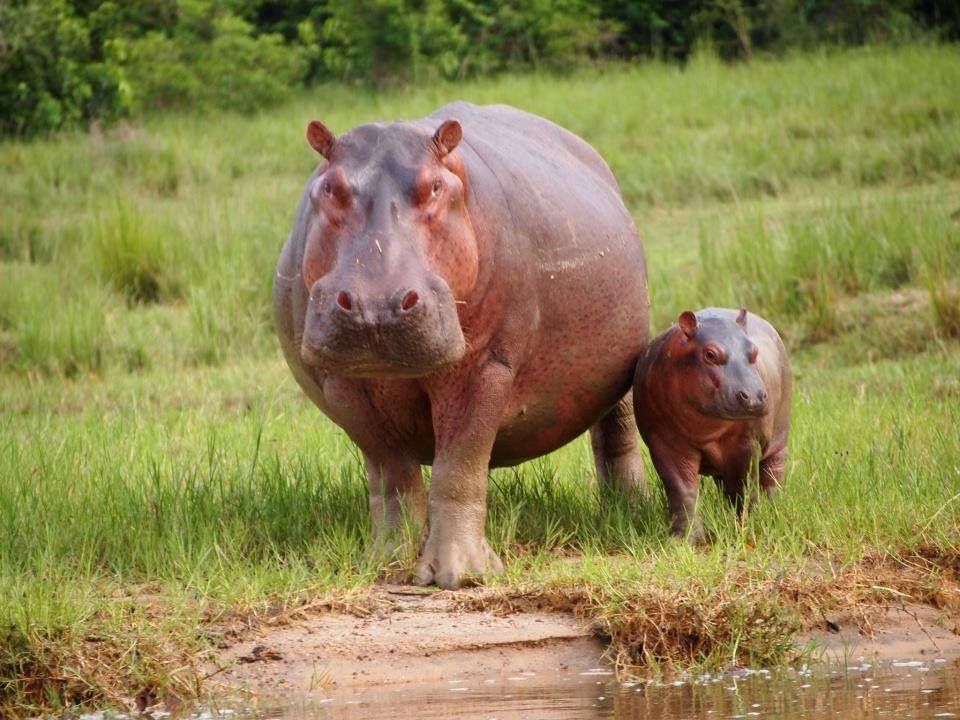
Hippopotamus is also commonly known as Water-Horse. Hippos are the third-largest land mammal after the elephant and the rhinoceros. Weighing in at 1,500–1,800 kg (3,300–4,000 lb.), an adult male stands up to 1.5m (4.5 feet) at the shoulder, and, oddly enough, their closest living relatives are whales and dolphins. Hippos spend most of their days submerged in water to keep cool, as they have no sweat glands.
Though they have webbed feet, their huge bulk prevents them from floating and they cannot swim. Their size does not, however, prevent them from outrunning a human - hippos have been estimated to reach terrifying speeds of up to 30 or even 40km per hour on land.
An adult hippo can spend as long as six minutes underwater, and their raised eyes, ears and nostrils allow them to remain almost entirely submerged for long periods of time. After spending the day bathing, hippos venture out at dusk and spend the night grazing, travelling up to 8km (5 miles) and consuming up to 68kg (150lbs) of grass each night to maintain their enormous size.
When hippos sleep in the water during the day they generally prefer to sleep in areas of shallower water. They are not standing or floating when you see them sleeping but rather laying flat on their bellies. Despite being semiaquatic and having webbed feet, an adult hippo is not a particularly good swimmer nor can it float. It is rarely found in deep water; when it is, the animal moves by porpoise-like leaps from the bottom.
#AfricantripswithGodie
#visitUgandarwandatanzania #Mammalsofeastafrica
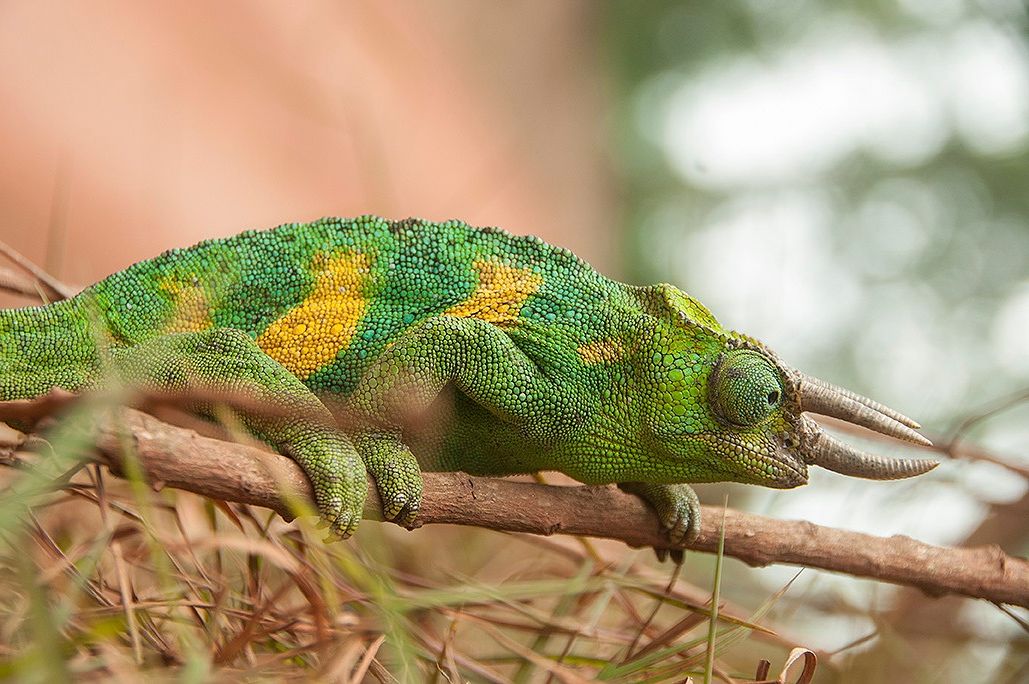
Tourism is a recreational travel that people do, Uganda has
been one of the African countries that has attracted prominent number of
tourists from different parts of the world. Uganda the pearl of Africa is one
of the fastest growing economies in Africa, there are so many building blocks
of this economy but one of the vital one that she is proud of is her tourist
attraction that she exhibits to tourists, with a lot of nature, culture and
amusement to offer. A tree did not start as a tree it started as a seedling
sown in the soil and because of the rich nutrient of the soil and care given to
it, it turned it into a tree, there are companies that have thrived and are
still pushing hard to strengthen the tourism industry in Uganda. One of them is
Interior safaris East Africa, one of the veins of the heart of Uganda tourism.
Uganda
has one of the best climates in Africa and in the whole world, this has maintained her tourist
attractions which has made it possible for tourism to occur. One of Uganda’s
tourist attractions are national parks, Uganda has numerous national parks like
Murchison Falls National Park often known as Kabalega mostly visited by
tourists because of its natural beauty, it’s located in the northern region of
Uganda it is 1,344 square miles large this makes it the largest wildlife
reserve. Queen Elizabeth National
Park which is 1,978 square kilometers in size and Lake Mburo National Park etc.
Uganda also has unique eye-catching features in the national parks like trees,
different species of birds and mountain gorillas. Interesting and enjoyable
activities at your view from different parts of the parks which includes
birding, chimpanzee tracking, cultural visits like meeting pygmies from Batwa
who were the first inhabitant of montane rainforest, hot air balloon safaris
and boat cruise. Due to the magnificent hospitality that Ugandans give tourists,
has increased their interest in touring the country because they make them feel
at home. All national parks in Uganda have lodges and hotels at different
points of the national parks which provide the tourists with good care, great
meals and fancy accommodation. When it comes to the longest river in the world
don’t look farther because it’s here in Uganda as well as mount Elgon, these
are places tourists won’t stop talking about because they are enticing and rich
in nature.
Life
has been made easy in case you would love to tour Uganda; with the help of
Interior Safaris East Africa you can be anywhere you want to be. Interior
safaris East Africa has been in the center of the tourism industry in Uganda,
it was founded by Elasmus Godfrey Tumwesigye in 2013. It has its head office in
Uganda. Interior safaris East Africa cares so much about their customers to the
extent that we have Agents in Europe for tourists interested in bare a peek of
the pear of Africa and the great lakes at large. Interior Safaris East Africa is surely the
right package deal to take you around Uganda, Rwanda and Tanzania because it
comes With lots of surprises from their services, Interior Safaris East Africa
gives the best to its customers, and that’s why before tourists decide on the
place they would love to visit they first speak to a tour consultant from Interior
Safaris East Africa who will later give them advice about the package that will
fit in their budget that they will be comfortable with.
Connect now to be in a
place enriched with nature.
Information from https://www.wwf.org.uk/learn/fascinating-facts/polar-bears
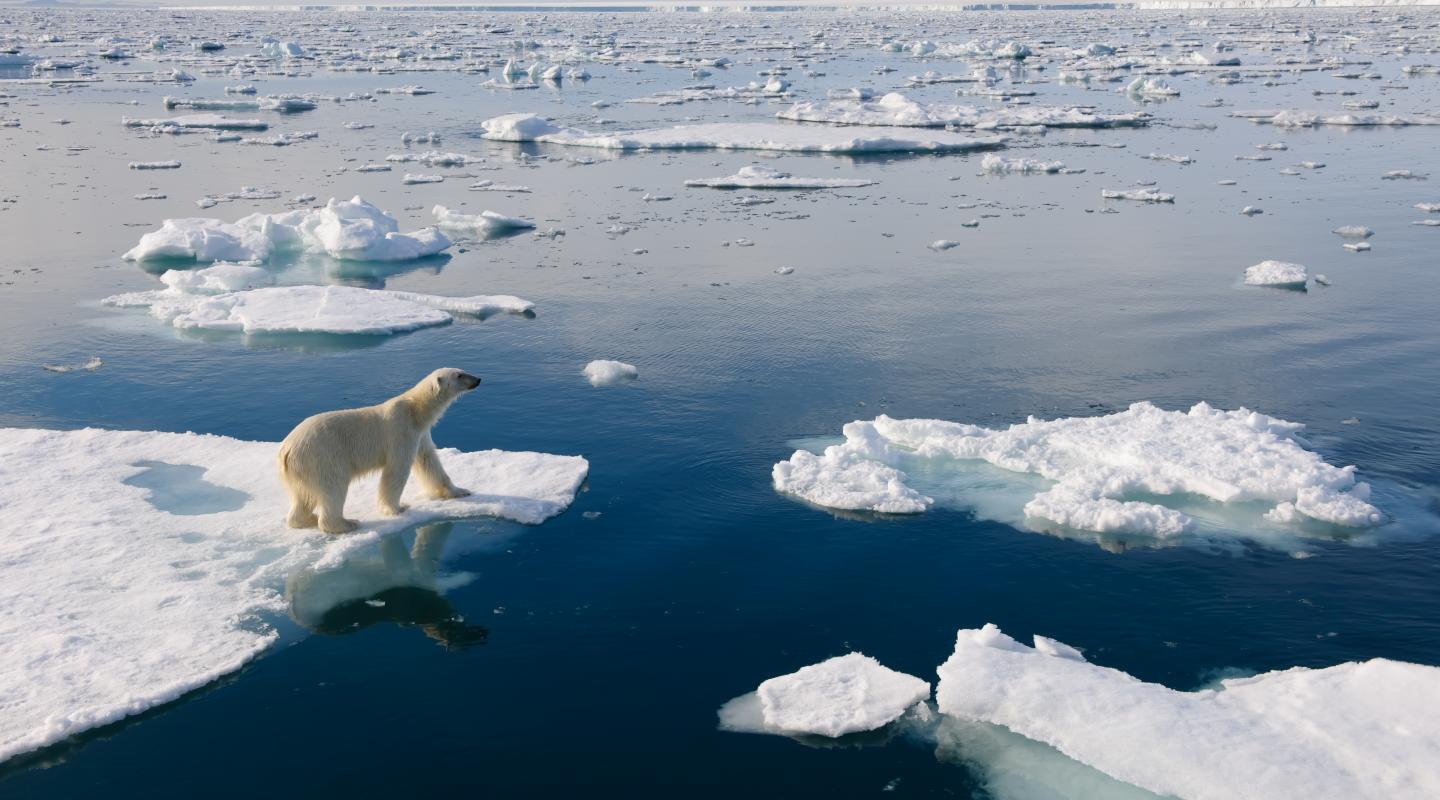 photo: Florian Schulz/visionofthewild.com
photo: Florian Schulz/visionofthewild.com
1. POLAR BEARS ARE CLASSIFIED AS MARINE MAMMALS
Because they spend most of their lives on the sea ice of the Arctic Ocean depending on the ocean for their food & habitat, polar bears are the only bear species to be considered marine mammals
 photo Jon Aars/Norwegian Polar Institute/WWF-Canon
photo Jon Aars/Norwegian Polar Institute/WWF-Canon
2. POLAR BEARS ARE ACTUALLY BLACK, NOT WHITE
Polar bear fur is translucent, and only appears white because it reflects visible light. Beneath all that thick fur, their skin is jet black.
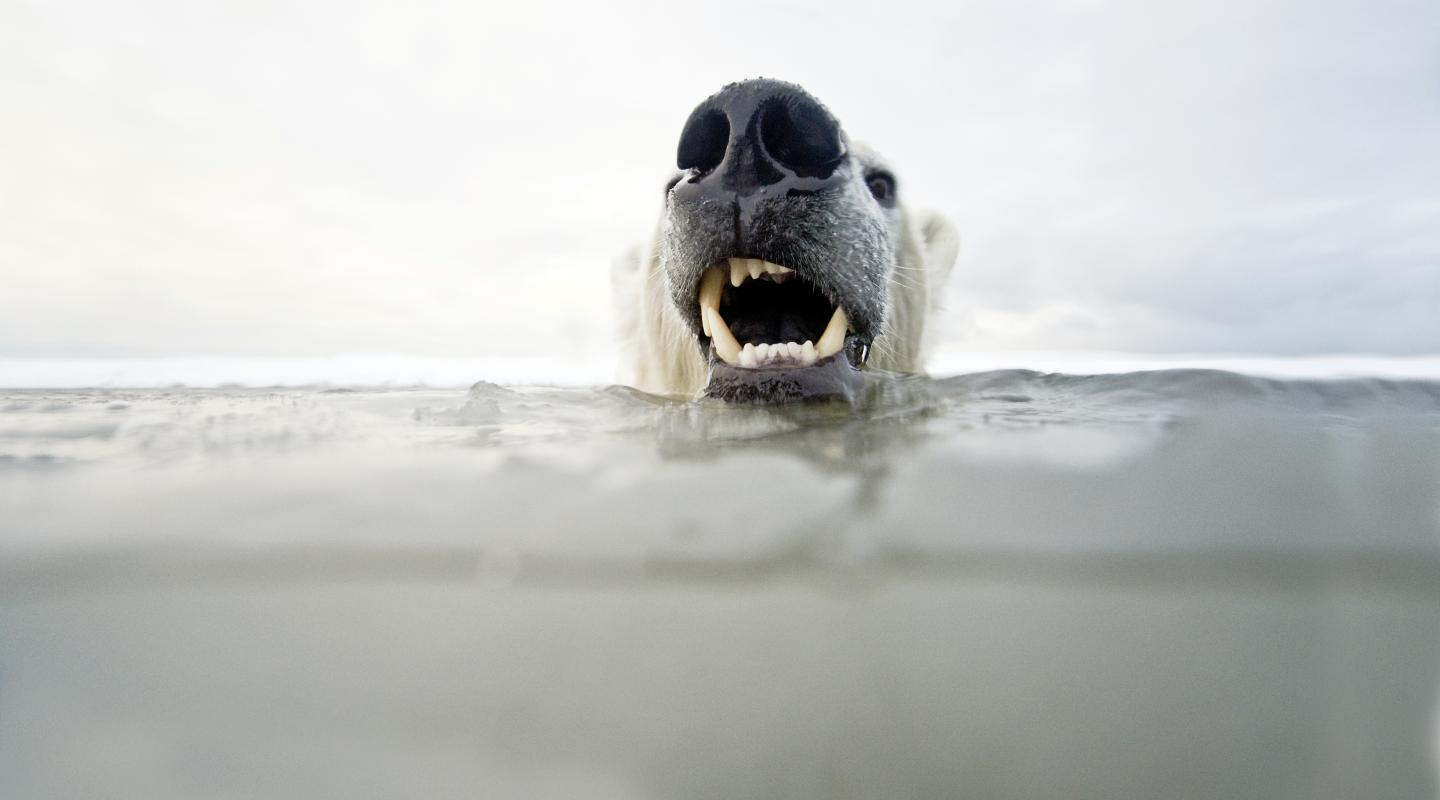 Photo: naturepl.com/Steven Kazlowski/WWF
Photo: naturepl.com/Steven Kazlowski/WWF
3. THEY CAN SWIM CONSTANTLY FOR DAYS AT A TIME.
As well as reaching speeds of up to 6mph in the water, polar bears can swim for long distances and steadily for many hours to get from one piece of ice to another.
Their large paws are specially adapted for swimming, which they'll use to paddle through the water while holding their hind legs flat like a rudder.
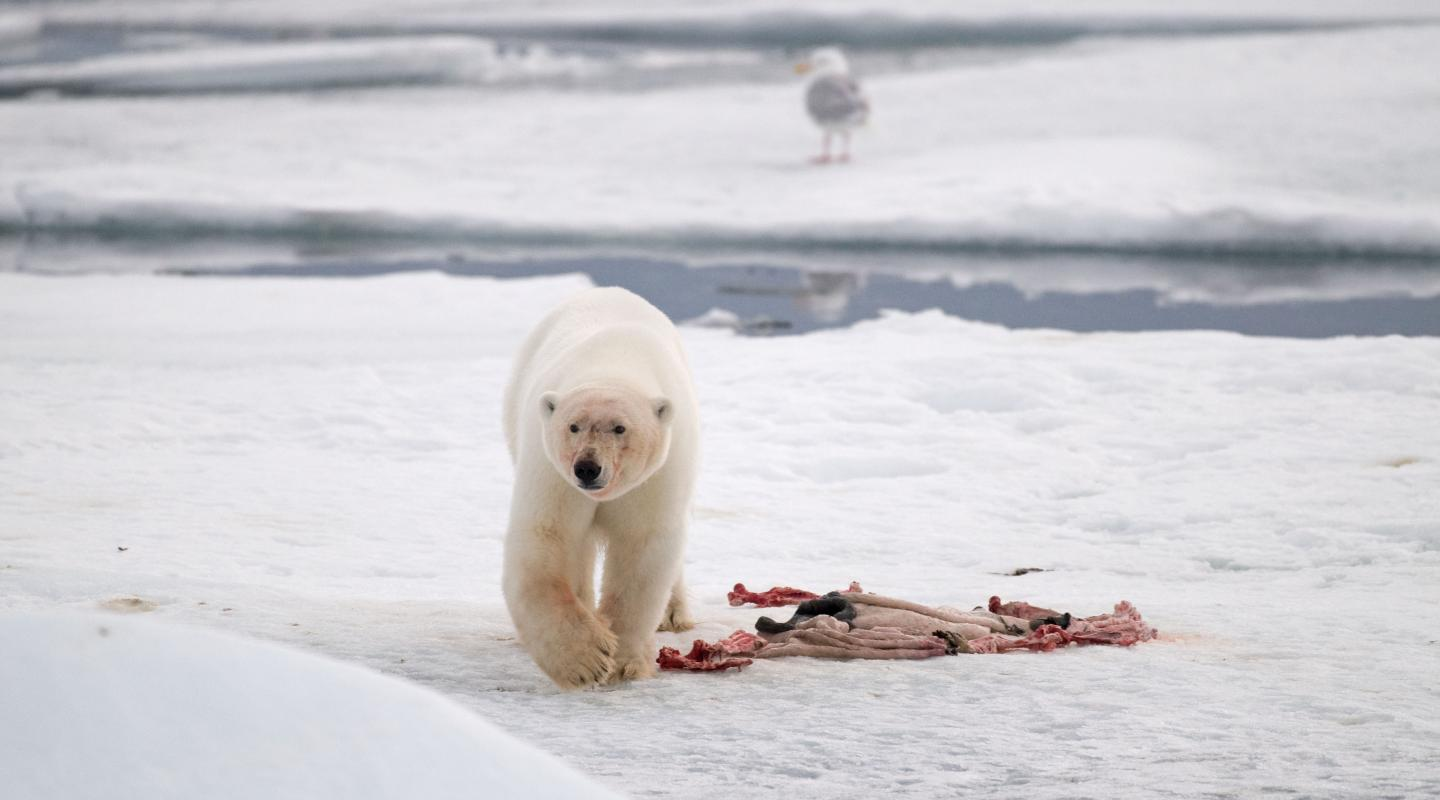 photo: Steve Morello/WWF
photo: Steve Morello/WWF
4. LESS THAN 2% OF POLAR BEAR HUNTS ARE SUCCESSFUL
Although about half of a polar bear's life is spent hunting for food, their hunts are rarely successful. Polar bears main prey consists of ringed seals and bearded seals,
though they will scavenge carcasses or settle for small mammals, birds, eggs, and vegetation
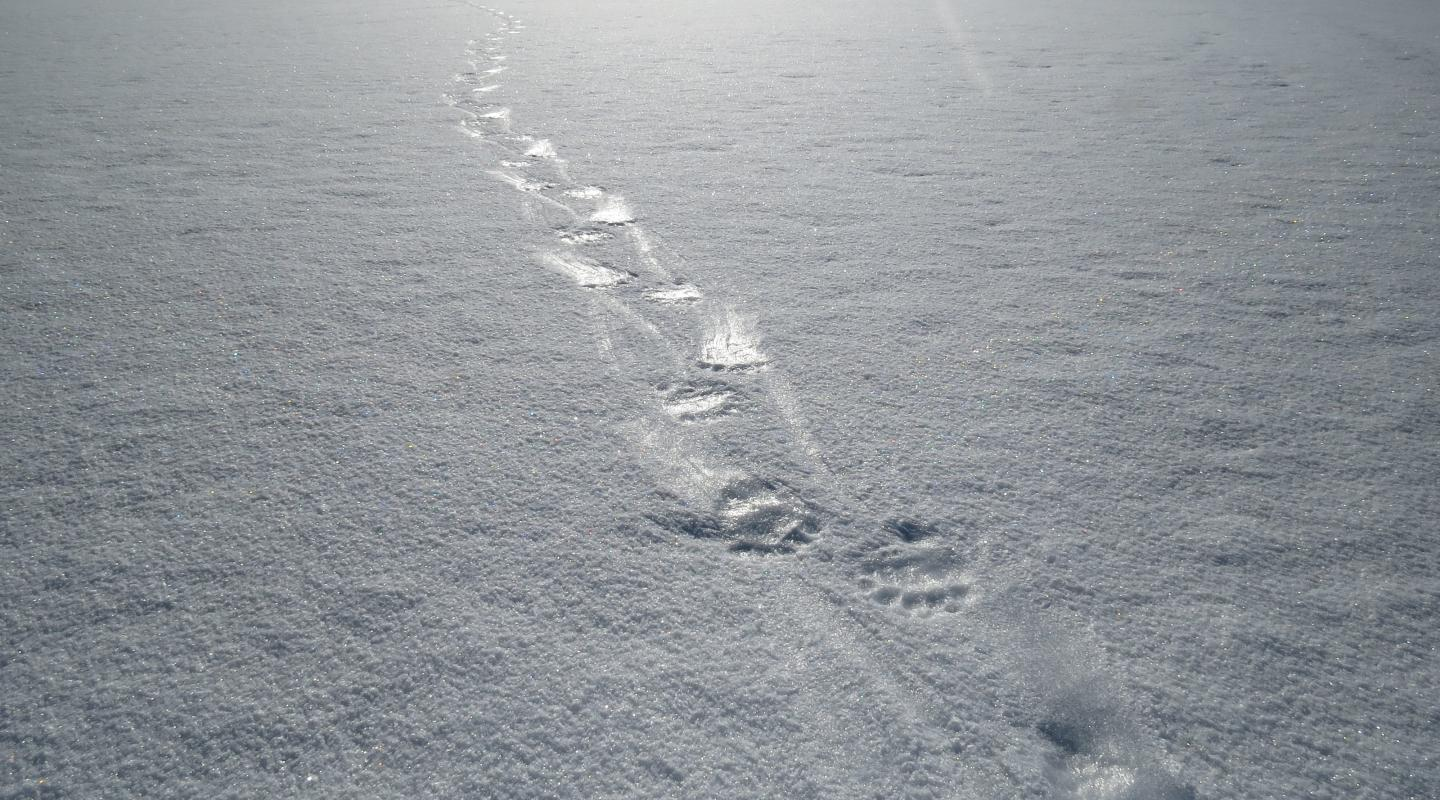 photo: Public Domain
photo: Public Domain
5. SCIENTISTS CAN EXTRACT POLAR BEAR DNA FROM JUST THEIR FOOTPRINTS
an innovative new technique developed by WWF and DNA specialist firm SPYGEN allows scientists to isolate DNA from a polar bear's footprint in the snow.
Two tiny scoops of snow from a polar bear track revealed not just the DNA of the polar bear that made it, but even from a seal, it had recently eaten.
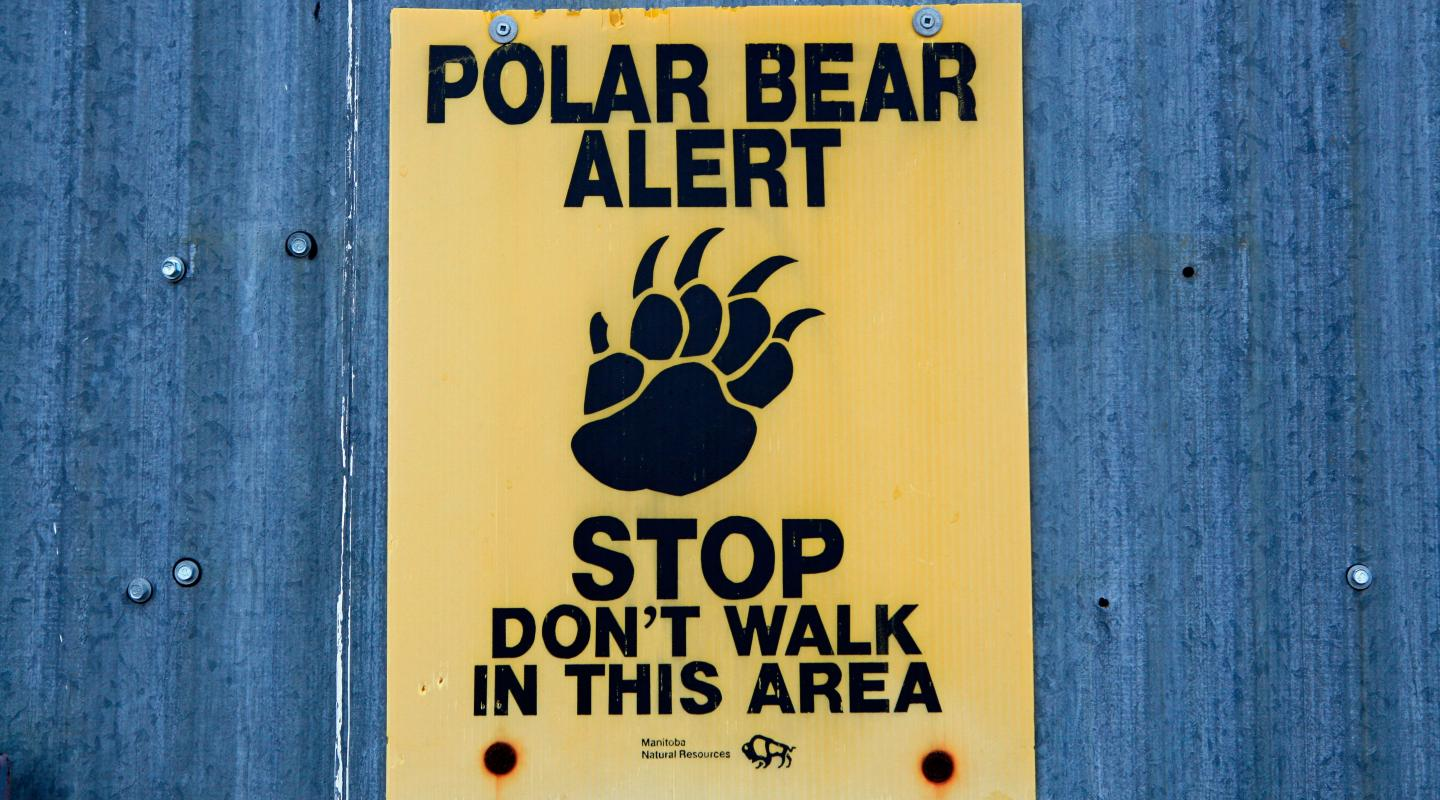 photo from WWF.org Website
photo from WWF.org Website
6. THEY FACE MORE THREATS THAN CLIMATE CHANGE
While climate change remains the greatest threat to the polar bear's survival, that is not all that the predator is up against. The oil and gas industry is turning its eyes to the arctic, and with it comes potential risks of habitat destruction from oil exploration work. Contact with oil spills can reduce the insulating effect of a bear's fur requiring them to use more energy to get warm, and can poison them if ingested. Polar bears can also be exposed to toxic chemicals such as pesticides through their prey, which can affect a bear's biological functioning and ability to reproduce.
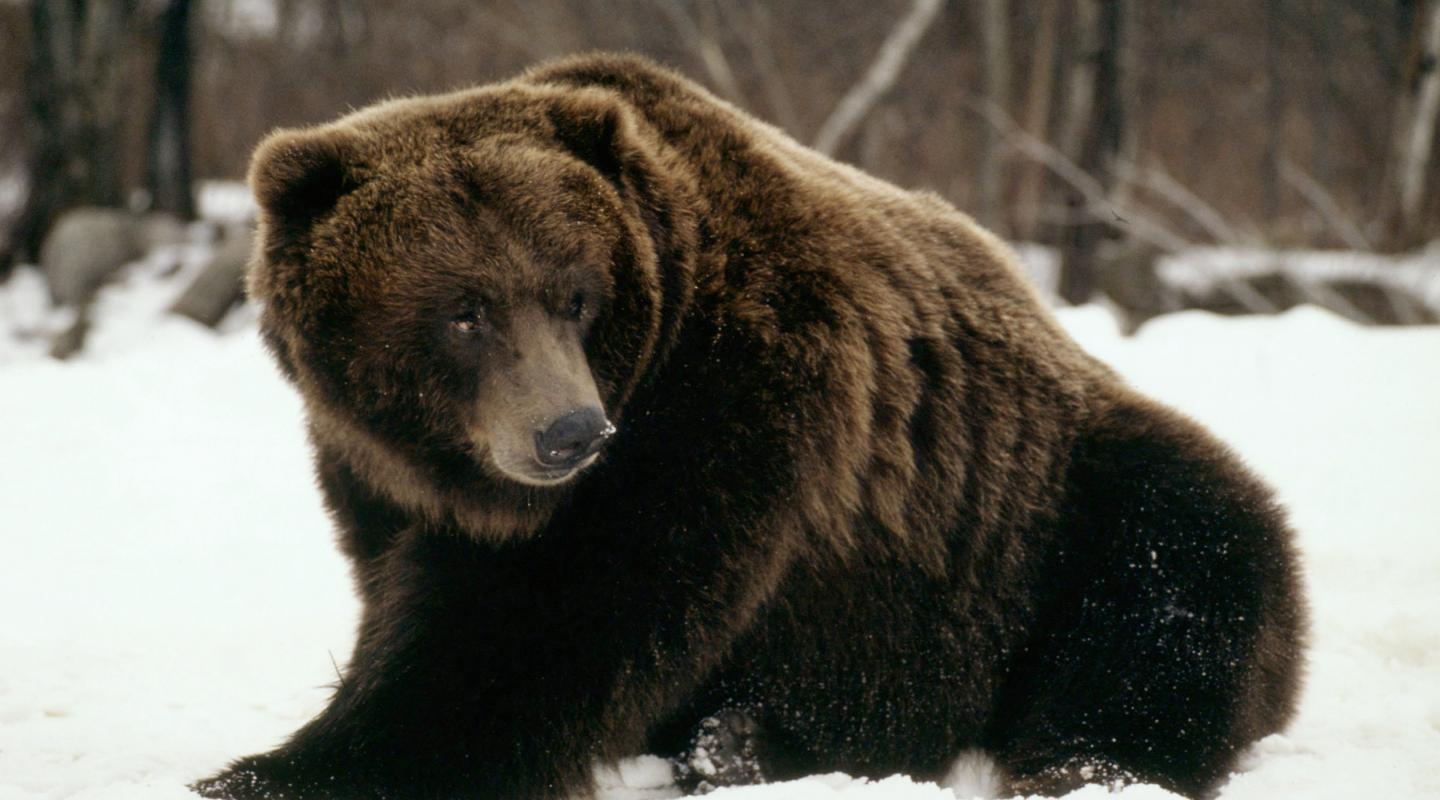 photo: Klein & Hubert/ WWF
photo: Klein & Hubert/ WWF
7. GRIZZLY-POLAR BEAR HYBRIDS EXIST
As recently as 2006 genetic testing confirmed the existence of polar bear-grizzly bear hybrids, also known as 'grolar bears' or pizzly bears'. The hybrid physically resembles an intermediate between the two species, but as wild hybrids are usually birthed from polar bear mothers they are raised and behave like polar bears. The ability for polar bears and grizzly bears to interbreed is unsurprising when you consider that polar bears evolved from brown bears as recently as 150,000 years ago.
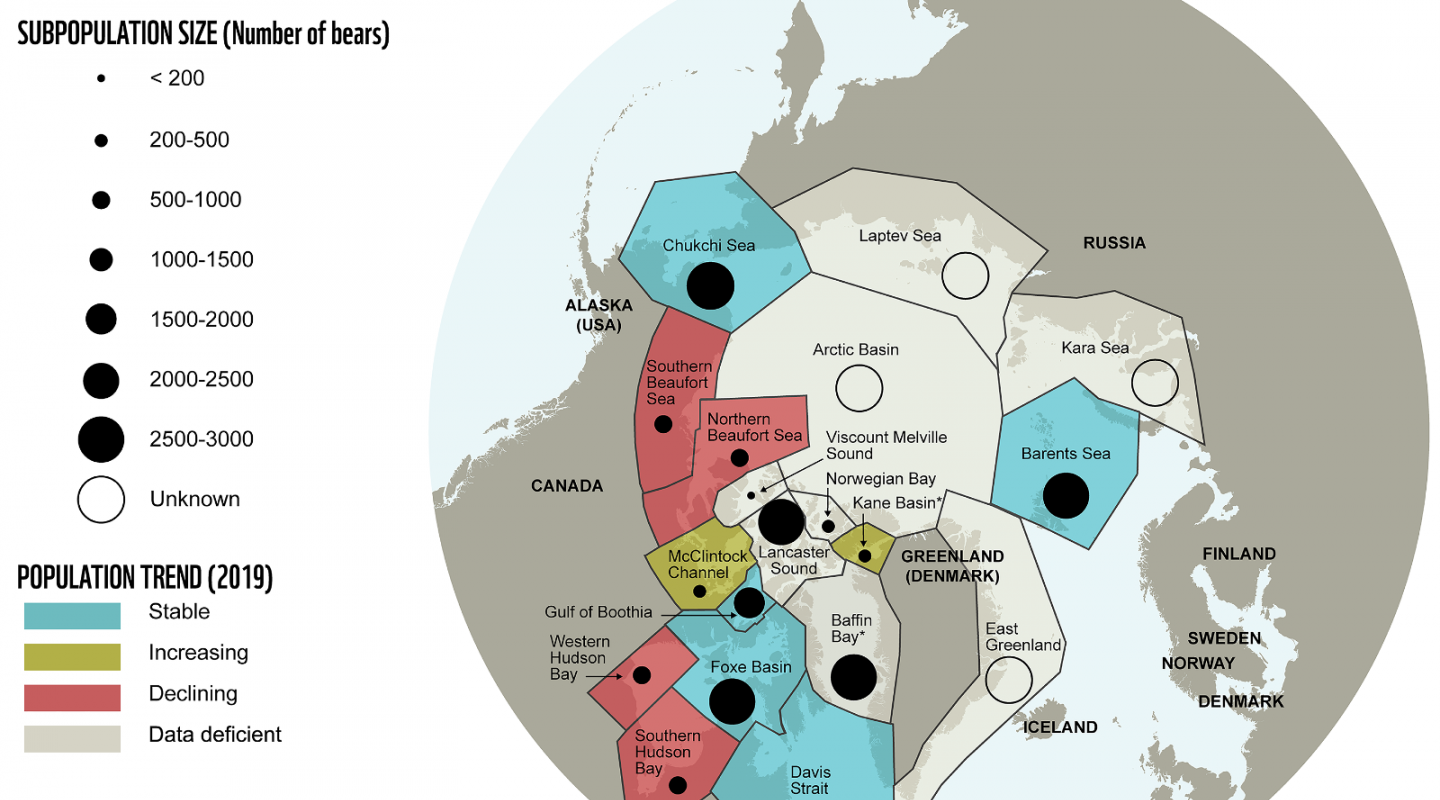 image: WWF-Canada
image: WWF-Canada
8. THERE ARE AS MANY AS 19 SUBPOULATIONS OF POLAR BEAR
The total population of approximately 26,000 wild polar bears is divided into 19 units or subpopulations, of these just 1 subpopulation is increasing, 5 are stable and 4 are in decline. The remaining 9 have not been assessed as they are data deficient. - we simply do not have enough information about them to know how they are doing.
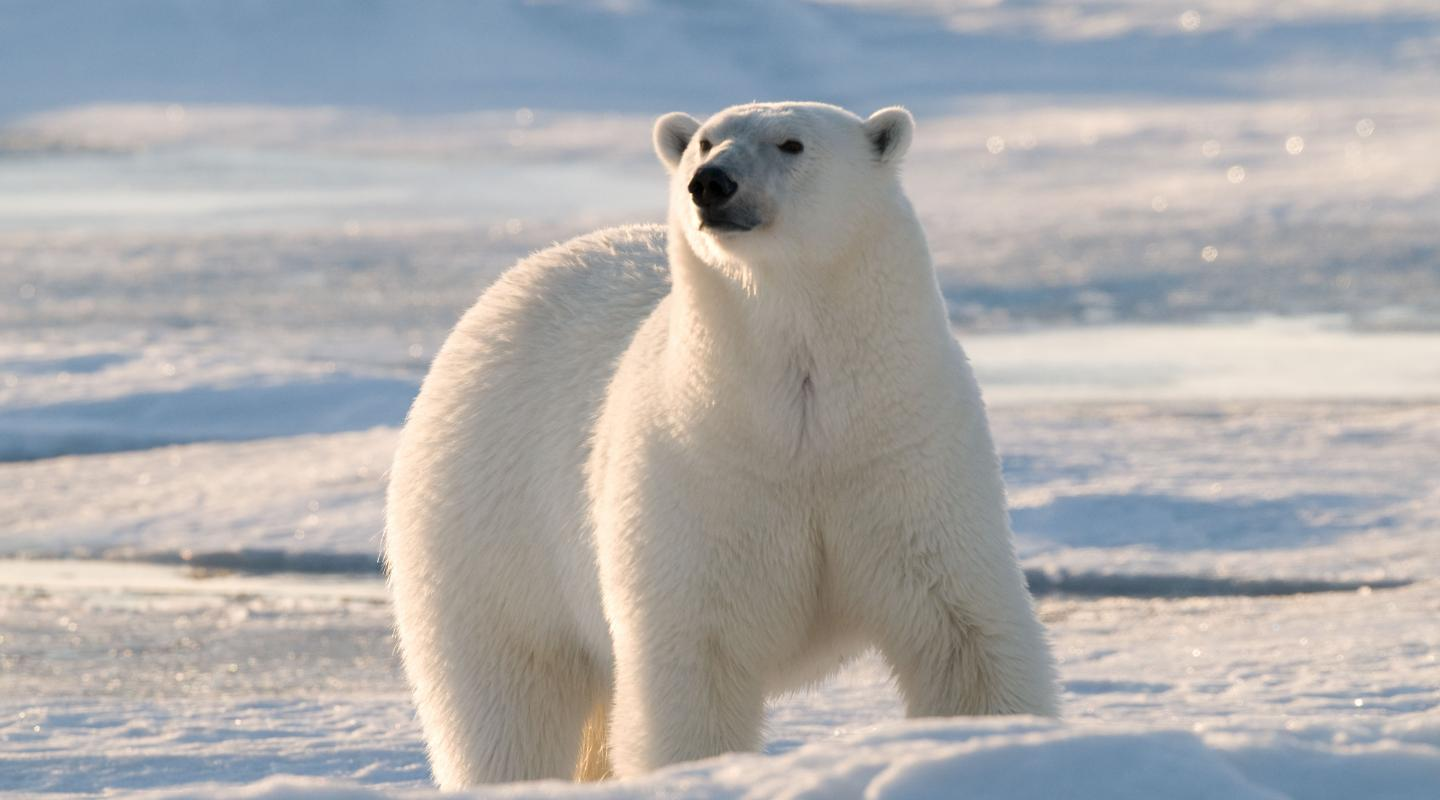 photo: Steve Marello/WWF
photo: Steve Marello/WWF
9. MALE POLAR BEARS CAN WEIGH AS MUCH AS 10 MEN
Male polar bears can weigh up to 800kg and are twice the size of females. This, in addition to the fact that they can measure up to 3 metres long, making polar bears the largest land carnivore in the world.
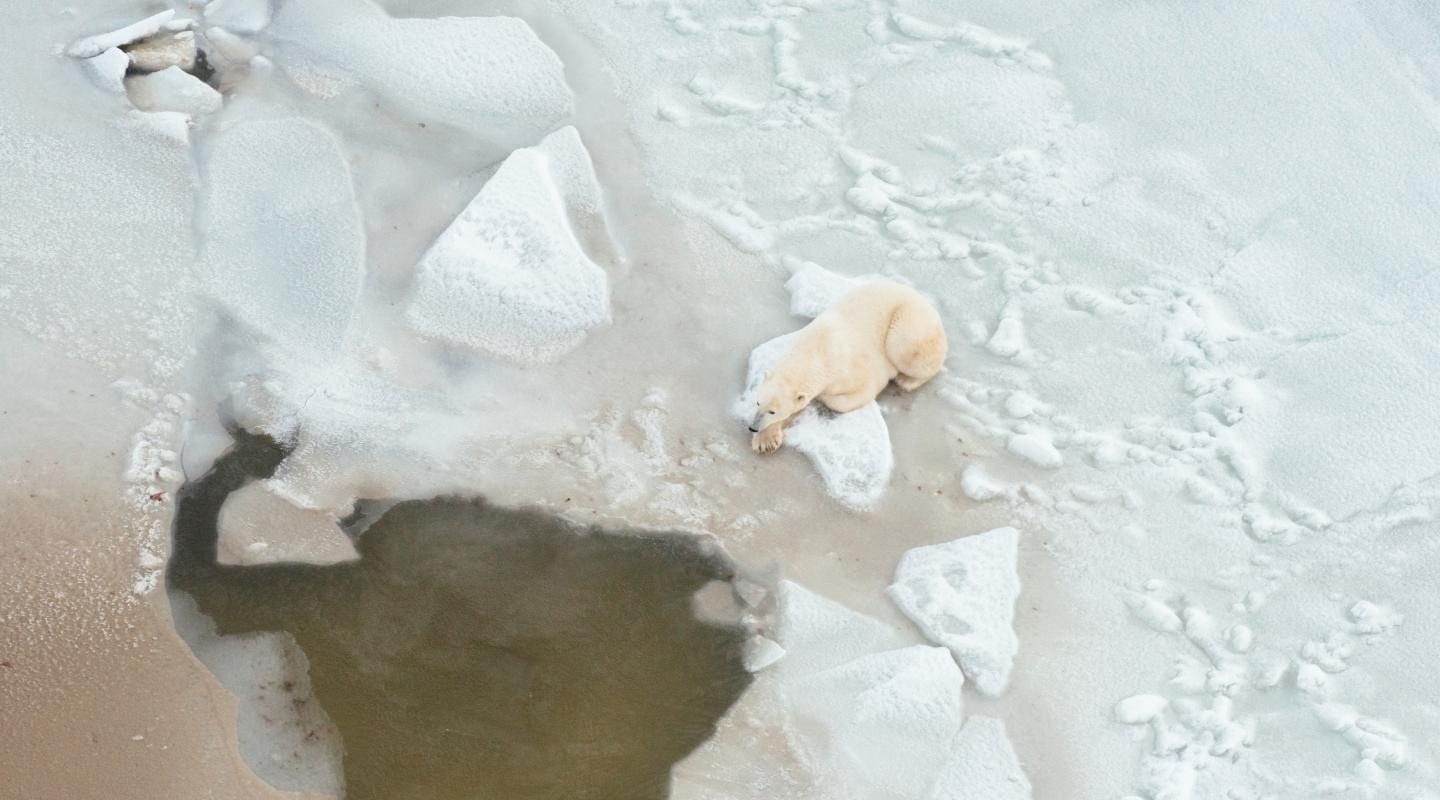 photo WWF-US/Elizabeth Kruger
photo WWF-US/Elizabeth Kruger
10 THEY CAN SMELL THEIR PREY UP TO A KILOMETER AWAY
Polar Bears have a very strong sense of smell, which they use to find seal breathing holes in the ice. Once it has found the hole, the bear will wait patiently until the seal comes up for air to attack. They can even detect a seal in the water beneath a metre of compacted snow.
PLEASE ADOPT A POLAR BEAR AT support.wwf.org.uk
Other cool facts about Polar Bears:
They can overheat when in running in the summer and when temperatures rise above freezing.
The clean themselves by rolling in snow.
They can reach speeds of up to 25 mph on land and swim 6mph.
They can live up to 30 years
A female polar bear will have an average of 5 litters of cubs her lifetime

SAFARI TRIPS TO SEE POLAR BEARS!
Polar Bear Mother and Newborn Cubs – March
Spring Polar Bears of Baffin – March & April
Narwhal and Polar Bear Safari – May & June
Polar Bears and Glaciers of Baffin Island – August
Polar Bear Migration Fly-In Photo Safari – October & November
Polar bears communicate through body language, vocalizations, and scent markings:
Head wagging from side to side: A sign that polar bears want to play. Adult bears initiate play—which is actually ritualized fighting or mock battling—by standing on their hind legs, chin lowered to their chests, with front paws hanging by their sides.
Nose-to-nose greetings: How a bear asks another bear for something, such as food. The guest bear will approach slowly, circle around a carcass, then meekly touch the feeding bear's nose.
Chuffing: A vocal response to stress, often heard when a mother bear is worried for her cubs' safety.
Scolding: Mother bears scold cubs with a low growl or soft cuff.
Rushing: When a male approaches a female with cubs, she rushes toward him with her head lowered.
Hissing, snorting, lowered head: Signifies aggression.
Loud roars or growls: Communicates anger.
Deep growls: Signifies a warning, perhaps in defense of food.
Charging forward, with head down and ears laid back: Attack mode.
Moving downwind of dominant bears: Signifies submission.
TO KEEP UP TO DATE ON POLAR BEARS WE RECOMMEND YOU BOOKMARK:
https://polarbearsinternational.org/